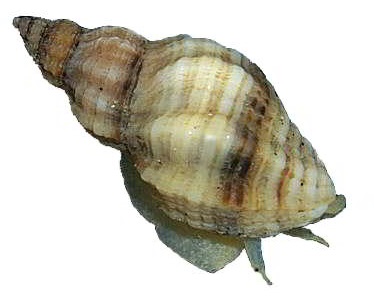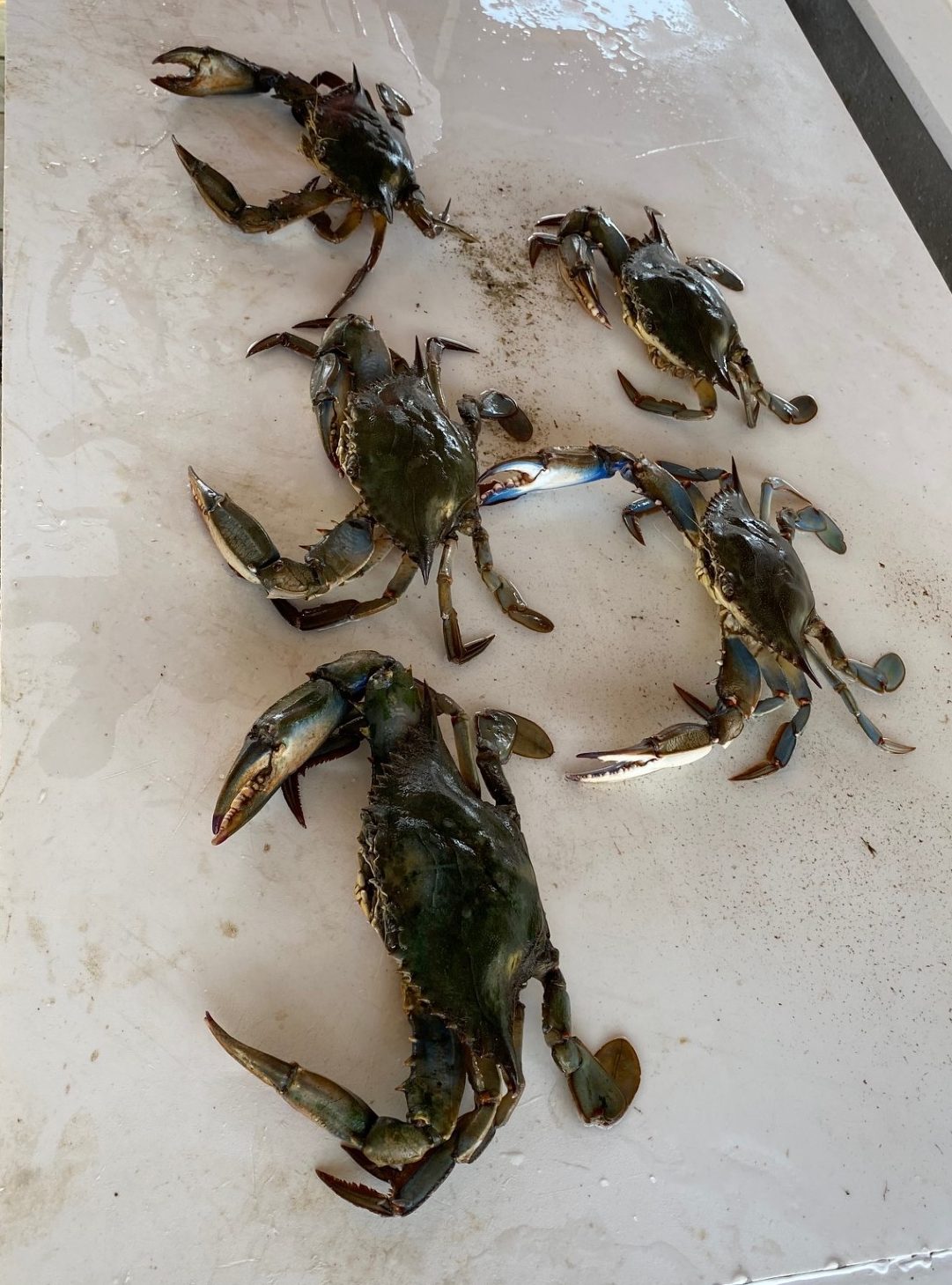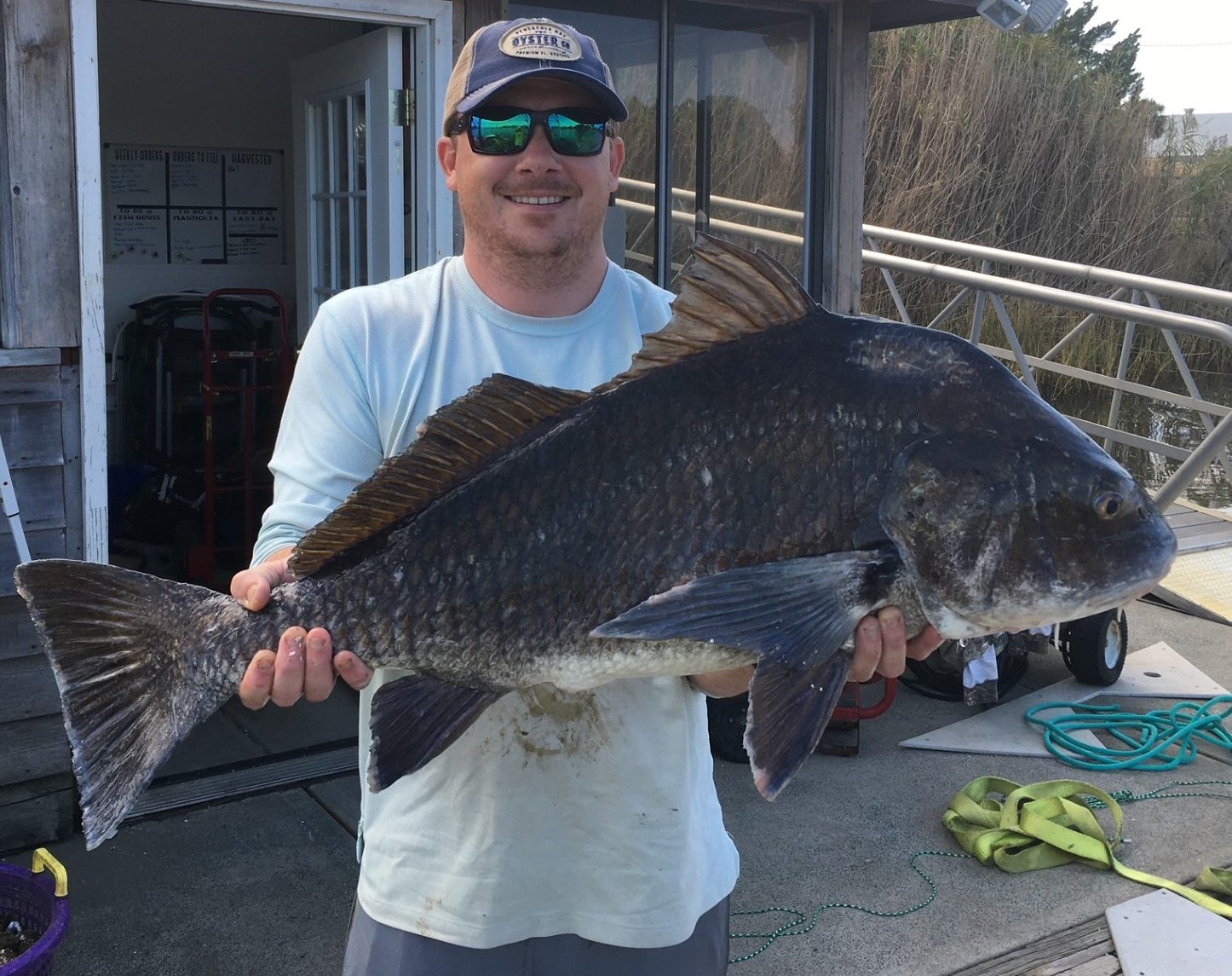Even though oysters have a hard shell that even humans have a hard time opening, they do have natural predators in our waters that can easily slurp up a couple dozen. Your usual oyster slurping suspects include oyster drills, blue crabs, and fish (such as the black drum). In this article, we will focus on the 3 major predators that contribute the most toward natural mortality in oysters here in the Florida Panhandle.
The Oyster Drill
When it comes to the marine snail world, oyster drills would win an oyster-eating contest. Oyster drills (Urosalpinx cinerea) are marine gastropods that grow to sizes of 0.5 – 1 inch. Oyster drills can be found all along the Atlantic coast of North America and the Gulf of Mexico, and they have been accidentally introduced into Northern Europe and the West Coast of North America. These small but mighty snails have become specialized in consuming oysters. Using chemotaxis, they locate their prey oyster. Once they find it, they secrete an enzyme to soften a portion of the oyster shell. Once softened, they drill into the shell and siphon out oyster meat. Oyster drills have been known to occur in great numbers when the environmental conditions are prime and can wipe out not only entire oyster beds but also clam beds. Oyster drills do have natural predators as well, but these predators also consume oysters.

The Blue Crab
Most of us know about the very tasty blue crab (Callinectes sapidus), but many do not know that it is a major consumer of oysters, especially on an oyster farm. Blue crabs are a decapod crab (meaning 10 legs) of the swimming crab family Portunidae. Blue crabs can indeed swim and their last leg on each side has developed into what are called paddle fins. Juvenile oysters are the main target for blue crabs, but they have been observed eating adult oysters when given the opportunity. On an oyster farm, blue crabs can get into an oyster bag when they are very small. Once inside, they have an all-you-can-eat buffet of oysters, and can quickly wipe out a bag of oysters. Oyster farmers have to be very cautious and must either remove the blue crabs manually or dry their bags out in hopes of destroying any blue crabs. Blue crabs can easily break open a juvenile oyster, but for them to consume an adult oyster, they will wait for it to open to feed before shoving a claw inside of the shell to keep the oyster open. Once they have their claw in the shell, they will use their other claw to consume the oyster.

The Fish
Even though oyster-eating fish like black drum (Pogonias cromis) and sheepshead (Archosargus probatocephalus) are much bigger than snails and crabs, they tend to contribute less to oyster mortality on oyster farms. However, during certain seasons wild oysters and other shelled invertebrates can contribute up to 33% of a black drum’s diet (more here). Fish will usually congregate around oyster beds and farms, but they are more interested in consuming oyster predators like crabs and snails. The black drum is a fish that was built for oyster consumption. While black drum lack sharp teeth, they have crushing plates in their throat that can crush an oyster shell which allows the drum to eat the oyster meat. Many oyster farmers welcome these fish on their farms as a free source of anti-fouling and predator deterrent (in the form of consumption).

There are many more oyster predators, but these are the top 3 in terms of threat and ability to consume/do detriment to oyster beds and farms in the Florida Panhandle. While oyster drills rank up towards the top, crabs and fish can also greatly contribute to natural mortality.
References
Flimlin, G., & F Beal, B. (n.d.). Major Predators of Cultured Shellfish. https://shellfish.ifas.ufl.edu/wp-content/uploads/Major-Predators-of-Cultured-Shellfish.pdf
- Aquaculture 101: Aquaculture in The USA - May 12, 2025
- Aquaculture 101: The History of Aquaculture - April 25, 2025
- A Northwest Florida Winter Wonderland - January 31, 2025
